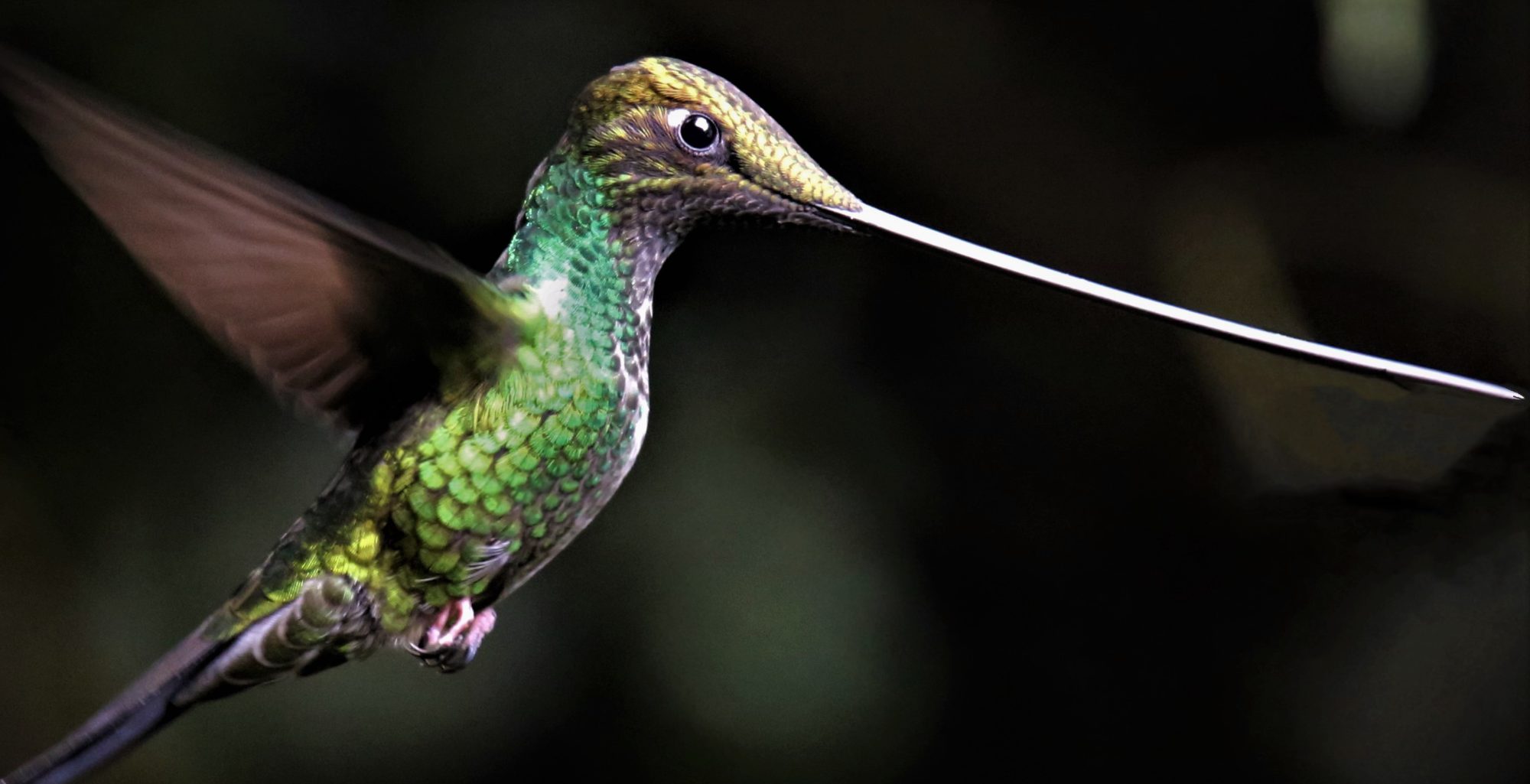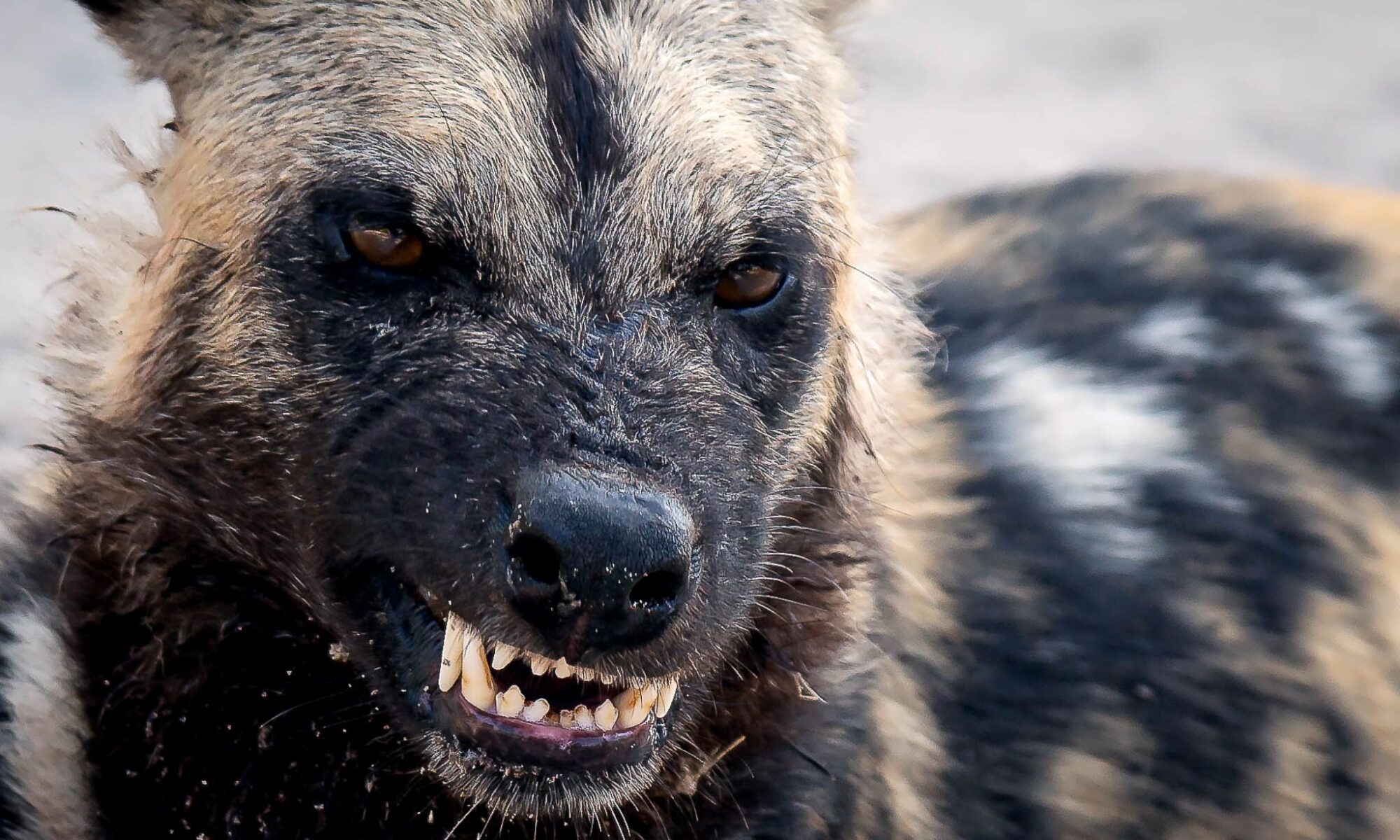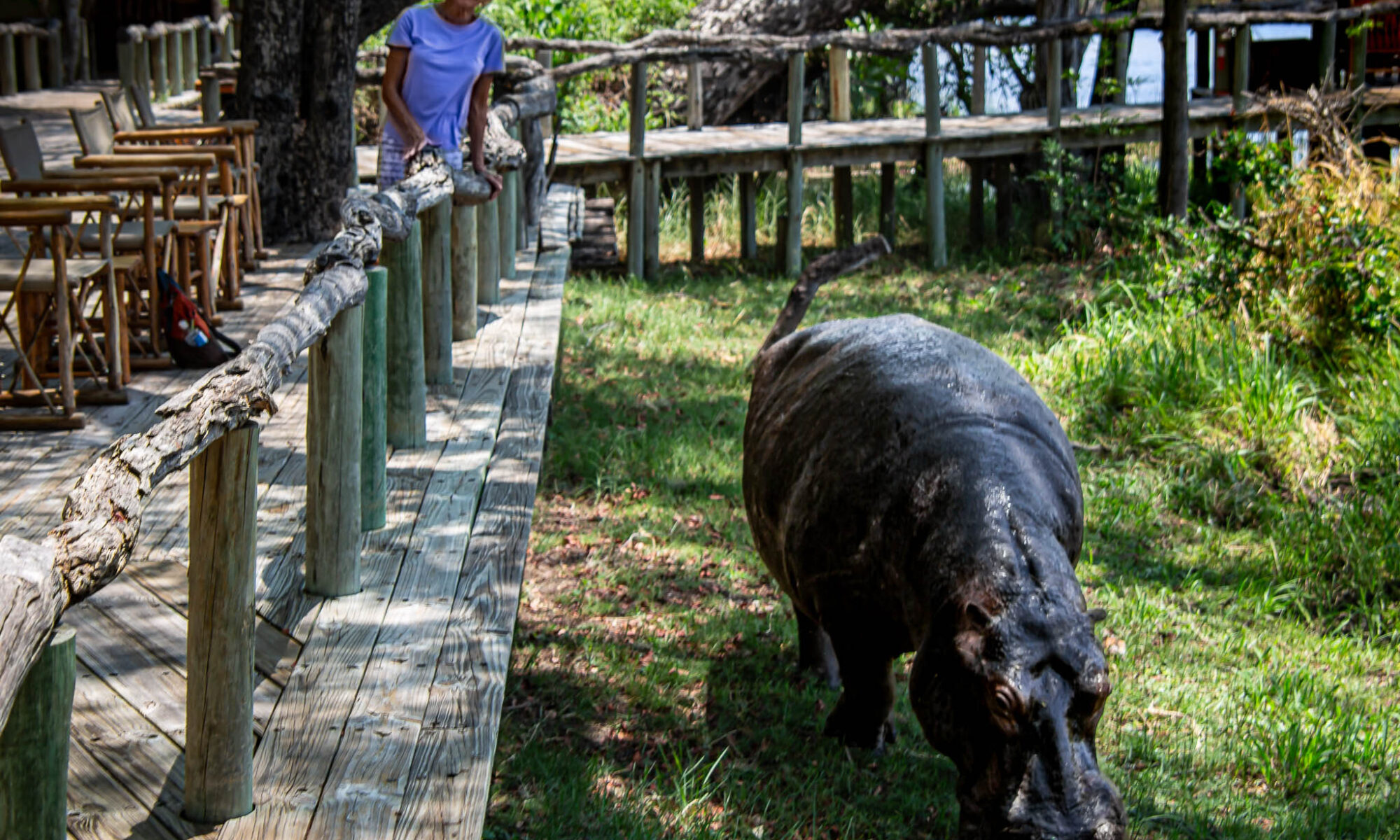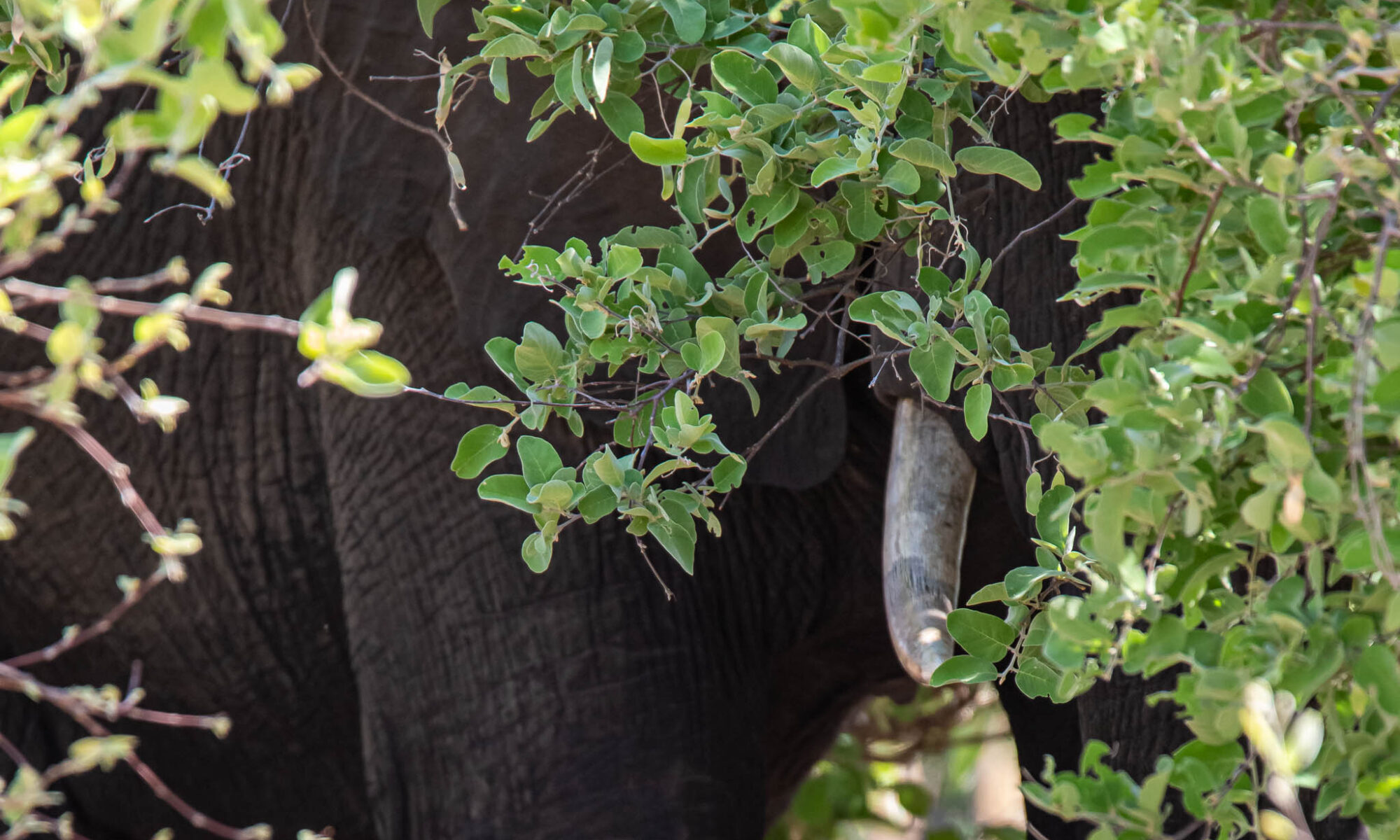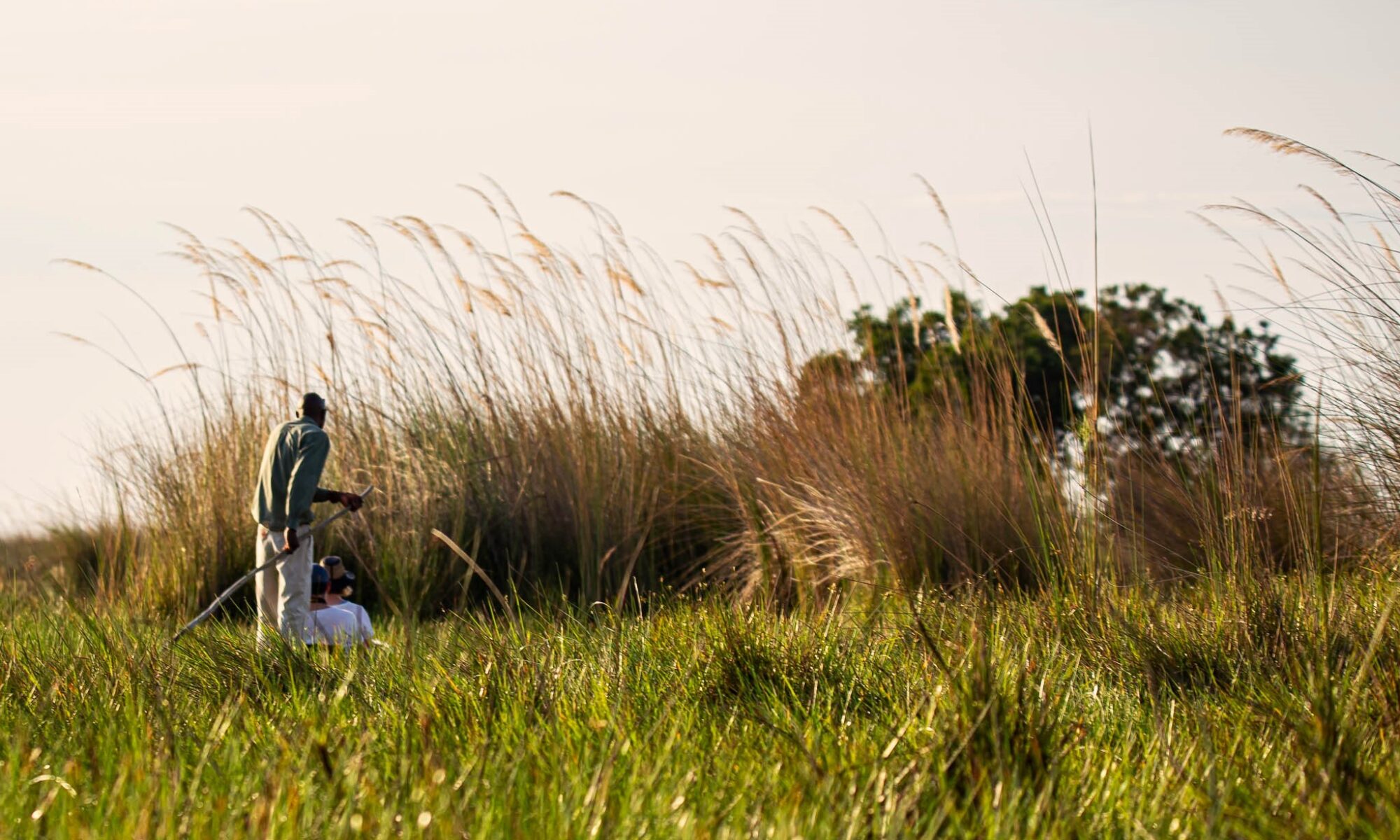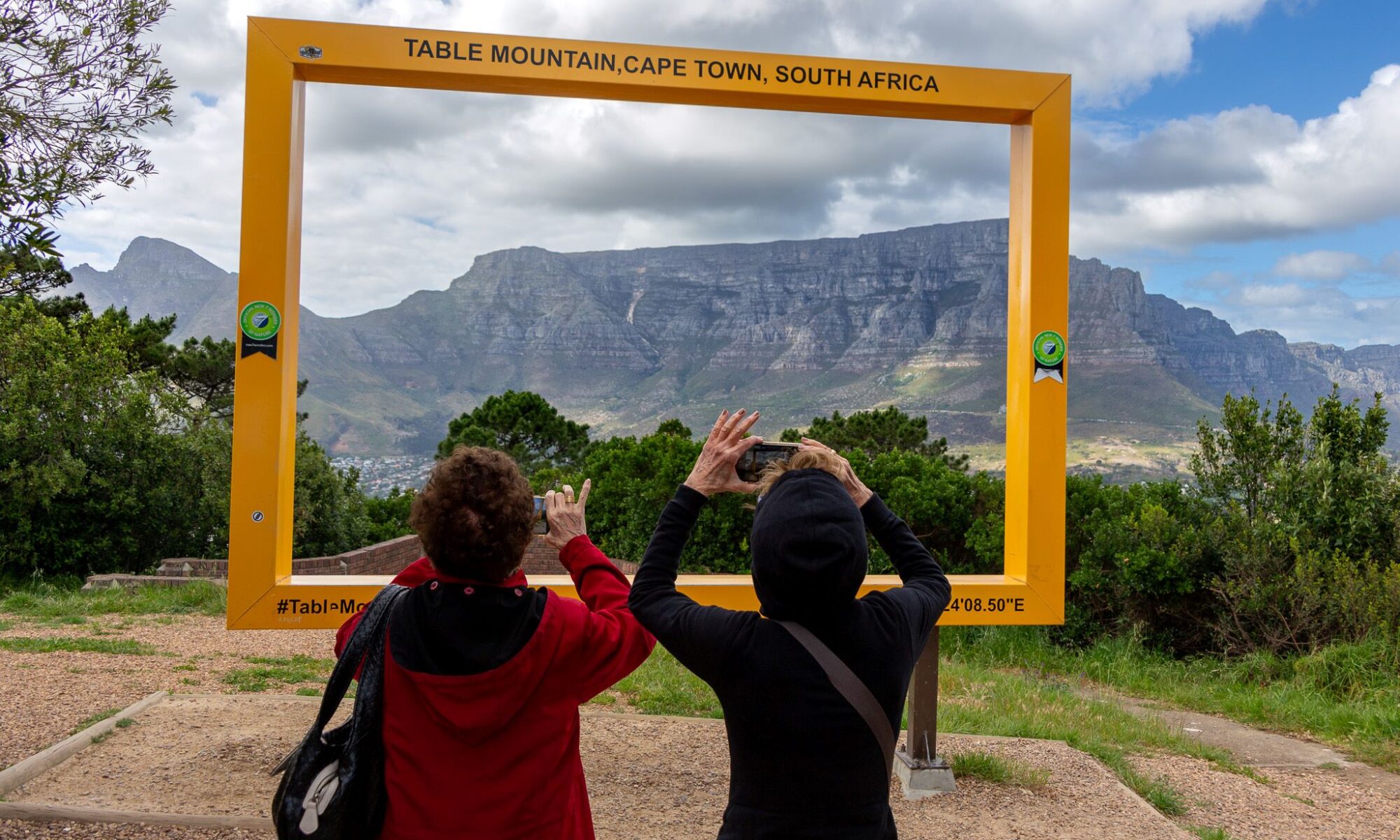I knew African Wild Dogs, Lycaon pictus (also called Painted Dogs or Painted Wolves, as well as a few other common names), were found in Botswana, and that they are rare throughout all of Africa. (According to the information I gleaned from the IUCN website, around 1,400 mature adults, and guesses of 5,000-6,000 total animals living in the wild, and approximately 600 African wild dogs living in zoos.) I saw a poster of one of them when we landed in the Maun airport, placed prominently, by a research group trying to solicit photos and data. They were the top mammal species I hoped to see and photograph. Realistically, I wasn’t expecting to see any. I mentioned them to Taylor, our guide (as well as leopards or any animal that was doing something really interesting), as being of special interest. As you can see from the lead photo, he was able to get us to see them. When he heard about their location on his radio, he rushed to get us there. We were pretty far away when he got a call from one of his colleagues that they had been spotted hunting. It was a bumpy ride on the two-tracked dirt road. It was on that drive that I learned Taylor called the vehicle we were riding in his Safari Ferrari. His skillful driving allowed us to make it there safely and it was a thrill. By the time we got there, they had finished the hunt and were resting on the side of the road; bellies full.
This particular group had at least one member with a radio collar. I don’t know if the scientists who placed the collar share the location data with the guides, but I don’t believe they do. Taylor had seen the group many times, I am sure. He said they had lost their alpha female, and that was the reason we didn’t see any puppies with them. Taylor said the group would become less efficient and likely become unable to keep up the numbers necessary to hunt successfully unless another breeding female either found the pack or developed within the group. So far, it hasn’t happened.
We didn’t stay long. Taylor mentioned it had been communicated to him that a female leopard had been seen not too far away. We had to move on, if we had any chance of seeing it. But by the time we arrived, there was no sign of it. We went off to another destination. Most of the time, in Moremi Game Reserve there is no shortage of things to see. It’s a question of finding them doing things that you want to see and getting a good vantage point with the right light.
After some driving to the other side of the park. We came around a low stand of bushes and below were two male lions. We stayed there for a while and watched them relax only a few yards from our vehicle. They didn’t seem disturbed at all by our presence. Only a very short drive away, there was a large pride of females and immature males. They were finishing up a cape buffalo that they had killed the night before. The males we just photographed had probably already had their fill, and as is typical in lion prides, the females and the youngsters get second choice. There wasn’t much left of the buffalo except bones. Most of the pride was either sleeping or acting playful with their siblings. But there was one large lioness who was gnawing on the skull. We were close enough to hear the sound of bones cracking. (And, close enough that you can almost see my reflection in both of her eyes in one of the photos I took.) It was obvious that she was hoping to get to the brain of the buffalo; she wasn’t making much progress and she picked up the skull and moved off. Taylor took that as a sign that it was time for our break.
We stopped for afternoon tea at a location far enough away from the predators. When we continued our drive, we saw a few more animals; including zebras fighting, impala browsing, giraffes on the move, and a massive herd of cape buffalo. We heard that the pride we had seen earlier was now resting out in the open, as the sun was getting low on the horizon. We went and took more photographs in the changing light.
In the grass near the marshy watering hole, stood a lone antelope buck. It was a red lechwe, Kobus leche. Some of the lions were keeping an eye on it. There were a few vehicles around hoping to witness lions on the hunt. One of the youngsters made a short attempt to stalk the antelope, but it didn’t go unnoticed. The antelope moved off trying to find cover, but in doing so one of the adult lionesses noticed something abnormal in the antelope’s movement. She got up and patiently began stalking her potential victim. Taylor moved the vehicle, to see if it turned into a successful hunt. We stayed as long as we could, but the reserve doesn’t allow vehicles out after dark. We didn’t see if the lions were going to have dinner, but we knew we would when we got back to camp. It was a special day, even without seeing the leopard. I knew I was going to have a lot of work to do when I got home, editing all the photos I took that day.
On our last morning game drive at Xakanaxa, we were not getting to see much in the Moremi Game Reserve. Just as Taylor stopped the vehicle and started to apologize for the slow day we were having, he heard squawking from birds and chatter from squirrels. He said there must be a snake nearby. He moved us a little closer to where the action was, and sure enough there was a long snake moving through the grass. It was faster than I had ever seen a snake move before. It was being dive-bombed by birds. Some came perilously close to becoming victims as the snake responded with lightning-quick strikes at its airborne adversaries. Taylor said it was a black mamba, a highly venomous snake I had only seen on television and read about in books. It was over almost as soon as the raucous battle started, as the snake slithered into the underbrush. I snapped a few photos, but none were good. I’ll include the best one, as evidence, in the gallery at the end of this post.
Just after we finished with the black mamba excitement, Taylor said one of his colleagues, named Kedi, contacted him on the radio informing him that she had found the leopard again. We weren’t that far away. We made our way there and the leopardess was indeed still there, but well camouflaged in the forest, and not in a good spot for a photograph. A few other vehicles showed up. I thought it would scare her away, but after a short wait, she started walking towards the clearing which was by now nearly full of vehicles loaded with happy passengers. I noticed that Kedi, was giving Taylor a wry smile and I took her picture. I asked him about it. He said the guides were pretty competitive when it comes to who finds the best animals for the guests. Kedi was leading the competition for the week.
For photos of our exciting three days in the Moremi Game Reserve, click here. I didn’t see it all, but I was starting to see why some, who have traveled extensively in Africa, say the people of Botswana are among the warmest people in Africa. Thanks to everyone who made our three days on safari at Camp Xakanaxa so satisfying. Our bags were packed and loaded in the vehicle before we started the morning drive. Shortly after seeing the leopard, we transferred our bags to a vehicle that had other guests also headed to the Xakanaxa airstrip from another Desert and Delta Safaris lodge in Moremi. We got in the back, and waved good bye to Taylor.
One more surprise, when we got to the airstrip strip we met a guy who was very excited to show us his fresh video of the same pack of wild dogs I spoke of in the beginning of the post. His group arrived just after the pack had taken down a small antelope. It showed the dogs ripping the poor animal to shreds and devouring it down to the bones in a matter of minutes. It was gruesome. It was fortunate for the wild dogs; not fortunate for the antelope. Just to add one more moment of excitement, as they were nearly finished their meal, a big lion rushed into the scene. The dogs scattered and the lion picked up the skeleton which was held together by meager shreds of muscle and ligaments. The video ended as we had to get into the bush plane back to Maun. It gave me something new to think about and inspired me to use the meanest looking photo I had for the lead photo. While I was watching, they were rather calm and relaxed, but oh my, the video told a different story.
